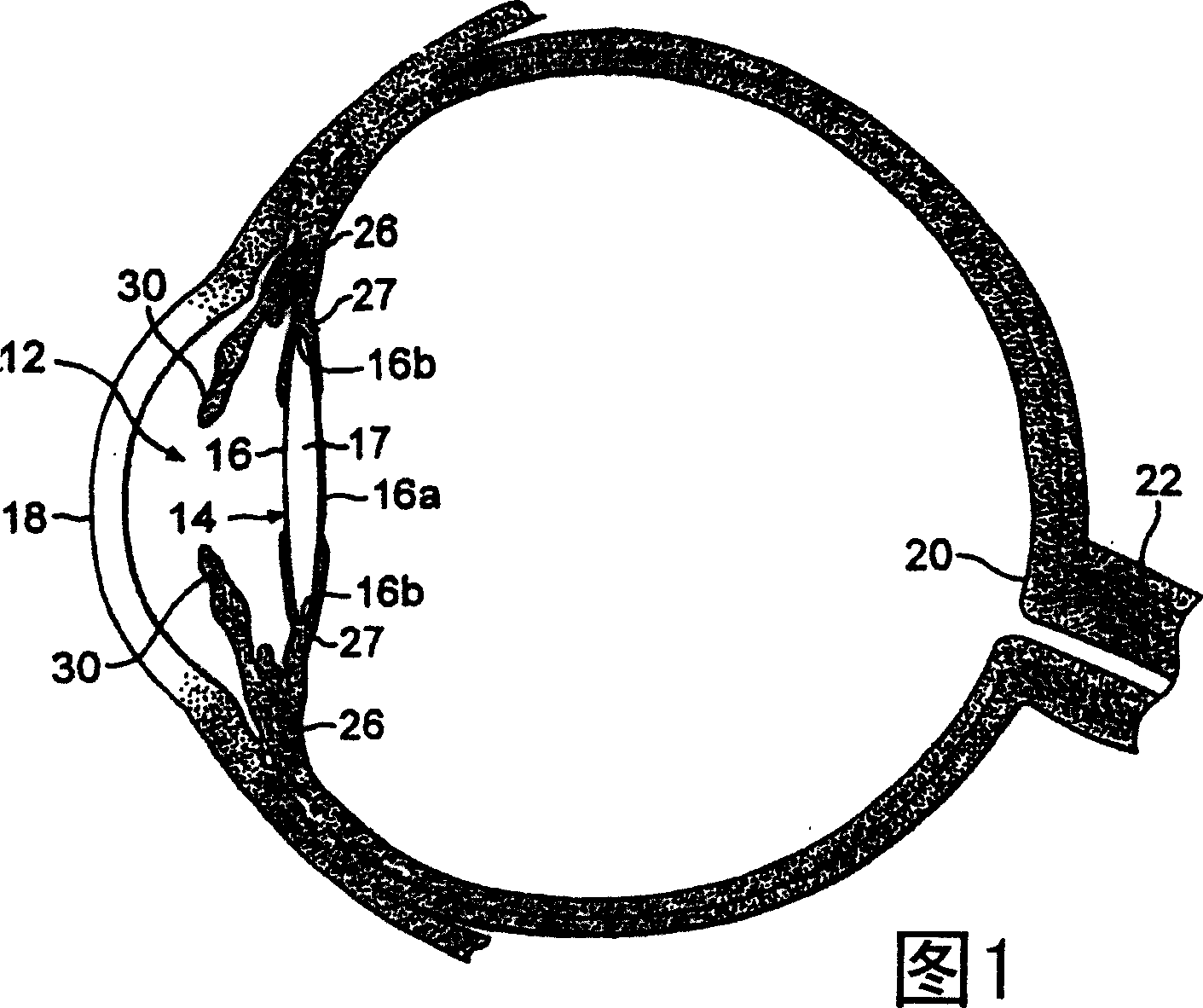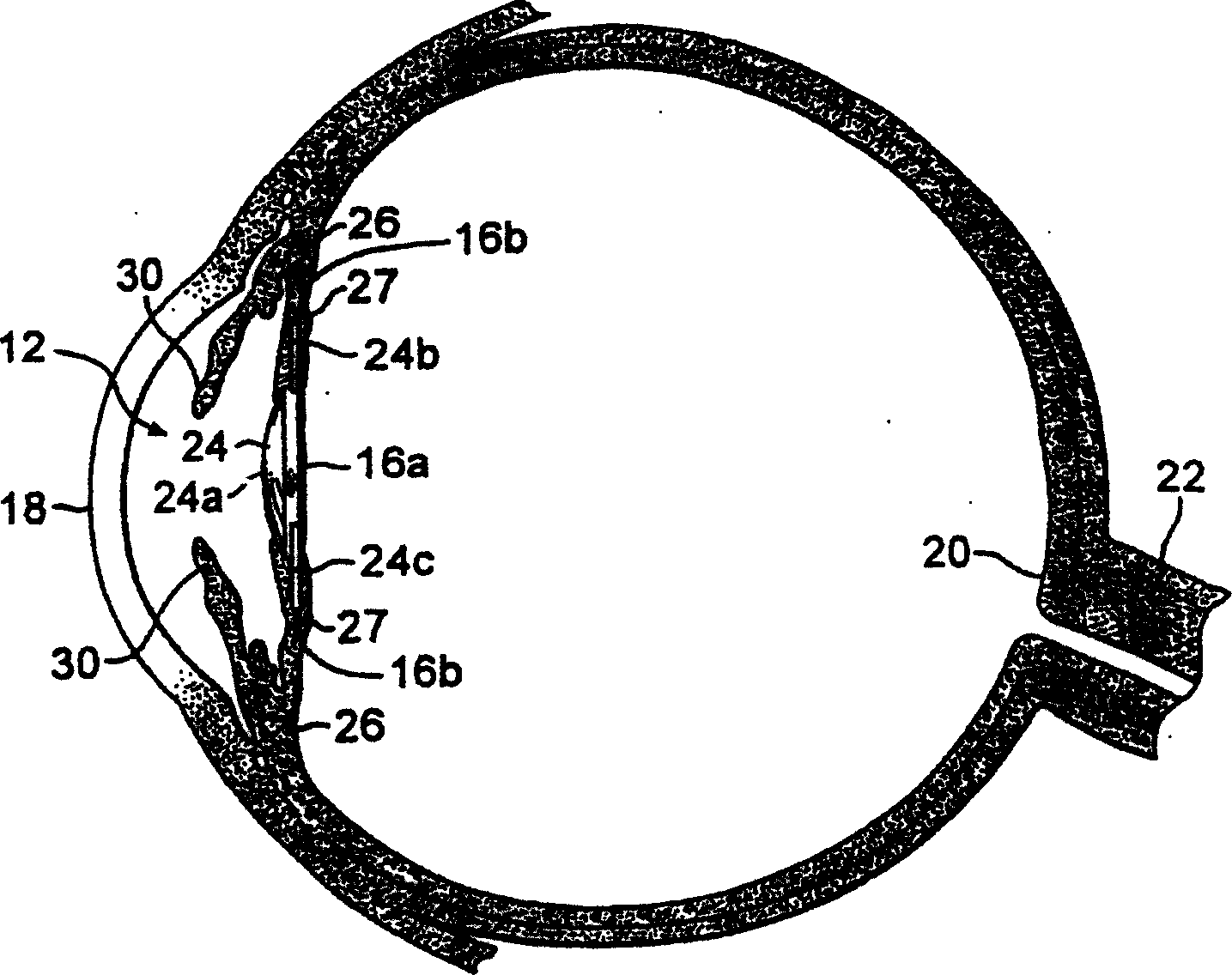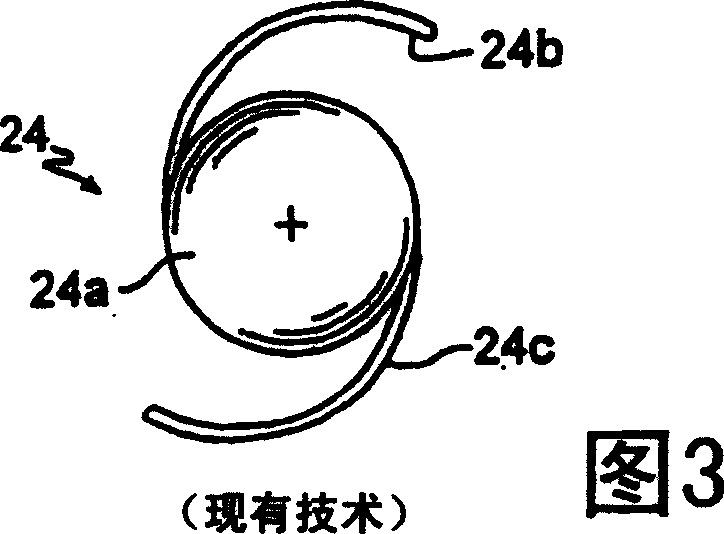Artificial crystalline lens
A technology of intraocular lens and crystalline lens, which is applied in intraocular lens, prosthesis, medical science, etc., and can solve problems such as posterior capsule opacification
- Summary
- Abstract
- Description
- Claims
- Application Information
AI Technical Summary
Problems solved by technology
Method used
Image
Examples
Embodiment Construction
[0022] Referring to the drawings, in the cross-sectional view of FIG. 1 , a human eye 10 has an anterior chamber 12 and a posterior chamber 14 separated by an iris 30 . In the posterior chamber 14 the inner capsule 16 houses the innate lens 17 of the eye. Light enters the eye through the cornea 18 to the natural lens 17, which together work to direct and focus the light onto the retina 20 at the back of the eye. The retina 20 is connected to the optic nerve 22, which transmits the images received by the retina to the brain for interpretation of the images.
[0023] In an eye where the natural lens is damaged (obscured, for example, by a cataract), the natural lens is no longer able to properly focus and direct incoming light onto the retina, and images become blurred. A known procedure to correct this condition involves removing the damaged natural lens and replacing it with an artificial lens called an intraocular lens or IOL, such as in figure 2 and the prior art intraocul...
PUM
 Login to view more
Login to view more Abstract
Description
Claims
Application Information
 Login to view more
Login to view more - R&D Engineer
- R&D Manager
- IP Professional
- Industry Leading Data Capabilities
- Powerful AI technology
- Patent DNA Extraction
Browse by: Latest US Patents, China's latest patents, Technical Efficacy Thesaurus, Application Domain, Technology Topic.
© 2024 PatSnap. All rights reserved.Legal|Privacy policy|Modern Slavery Act Transparency Statement|Sitemap



